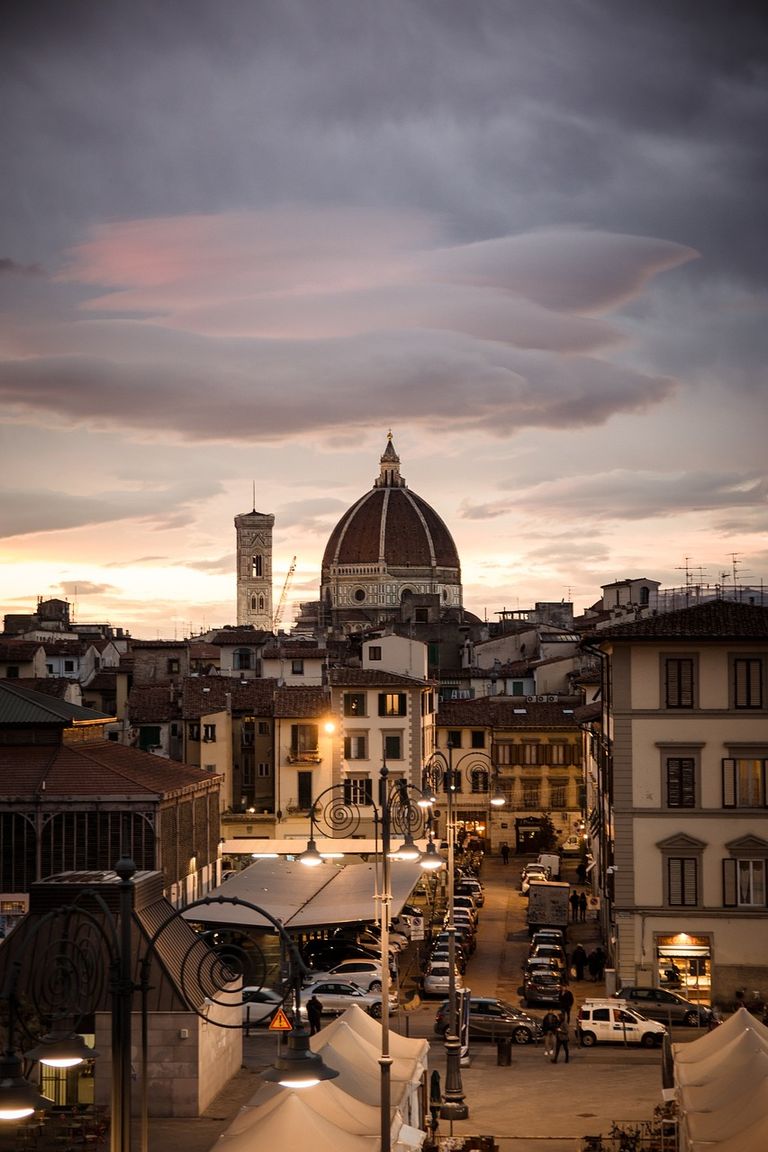
Hello dear community,
Another part of my series "The best pictures of places I've already visited". Today we turn to Florence in Tuscany, Italy. A city with a very special flair that I always enjoy visiting. Here, too, you can easily spend several days and always find new sights that are worth a visit.
First of all, of course, the famous Florence Cathedral, officially known as the Cathedral of Santa Maria del Fiore, one of the most striking architectural sights in the city of Florence and a masterpiece of Renaissance architecture. Construction began in 1296 under the direction of the architect Arnolfo di Cambio and was not completed until the 15th century. The most striking feature of the cathedral is undoubtedly the huge dome designed by Filippo Brunelleschi. It is one of the largest domes in the world and is a symbol of the technical and artistic achievements of the Renaissance. The dome is made of brick and is known for its innovative construction, which does not require any supporting scaffolding.
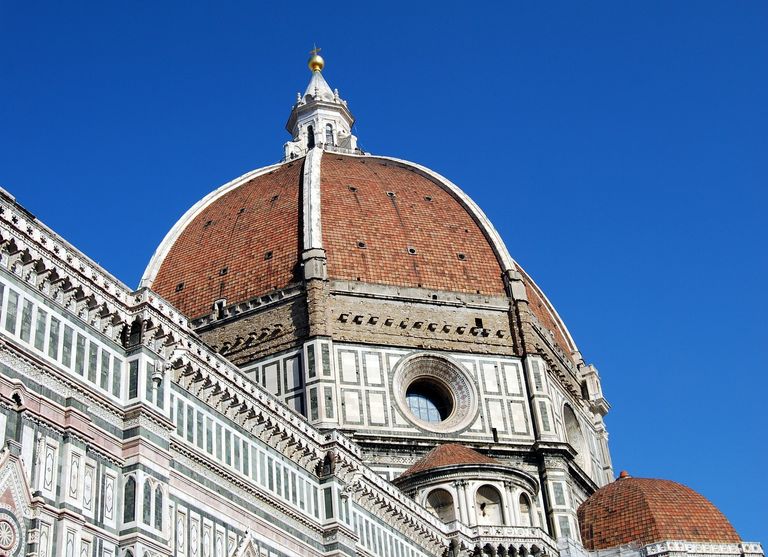
The cathedral's facade is decorated with white, pink and green marble and features numerous sculptures and reliefs depicting biblical scenes and saints. The bell tower, designed by Giotto, is another impressive element of the Duomo and offers breathtaking views of Florence and its surroundings.
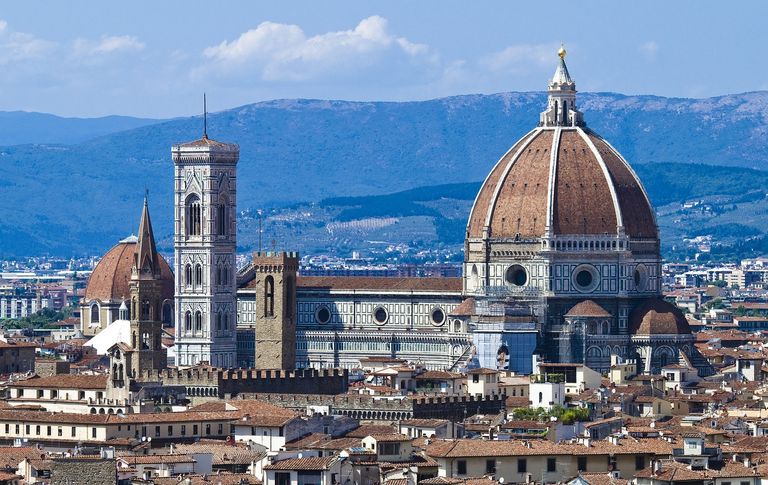
Inside the cathedral are valuable works of art, including frescoes, paintings and sculptures by artists such as Donatello, Andrea del Castagno and Paolo Uccello. The huge dome dominates the interior and is decorated with beautiful frescoes of the Last Judgment created by Giorgio Vasari and Federico Zuccari.

The Florence Cathedral is not only a religious center, but also a symbol of the rich history and culture of the city of Florence, as well as the art and architecture of the Renaissance. It attracts millions of visitors from all over the world every year who come to admire its beauty and significance.
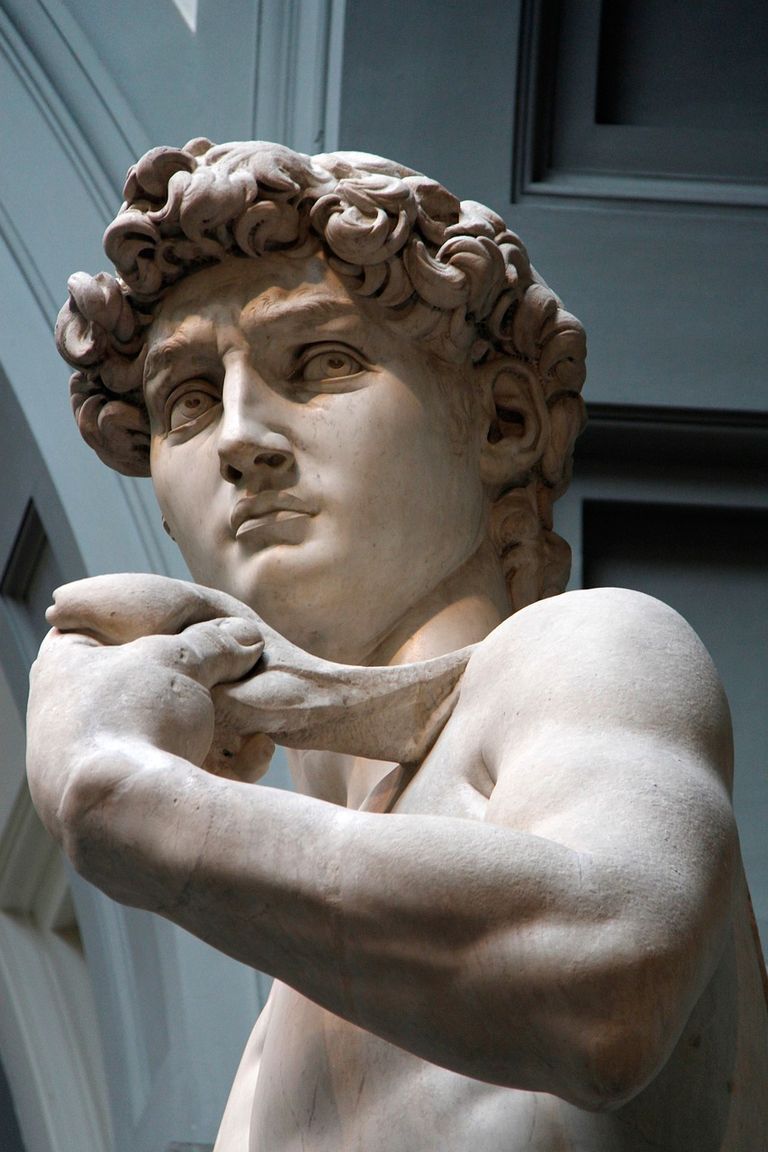
And of course you can also find one of the most famous statues in the world here. Michelangelo's Statue of David is one of the most famous masterpieces of the Renaissance and an icon of sculpture. The statue was created between 1501 and 1504 from a single block of white marble and depicts the biblical hero David before defeating Goliath. The statue stands approximately 17 feet tall and depicts David in a determined stance, ready to use the slingshot against his powerful opponent. Michelangelo gave the statue a remarkable lively and dynamic quality, depicting David as a youthful hero with muscular strength and intense expression.

She is known for her exceptional attention to detail and anatomical precision. The well-developed muscles and the realistic depiction of the tension in David's body are particularly impressive. Michelangelo created a perfect balance between physical strength and mental concentration, making the statue a masterpiece of sculptural art. The statue was originally placed outdoors in the Piazza della Signoria in Florence. However, due to environmental damage, it was later moved to the Galleria dell'Accademia, where it can now be admired in a specially created room. Michelangelo's statue of David is not only a symbol of the city of Florence, but also a symbol of human beauty and man's ability to overcome overwhelming obstacles.
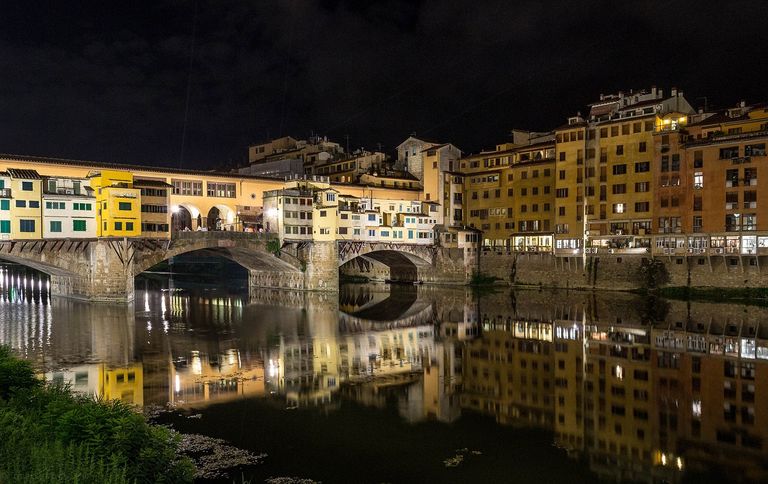
A very special walk takes you over one of the most famous bridges in world history. The Ponte Vecchio is one of the most characteristic bridges in Florence. Its name means "old bridge" and it crosses the Arno River in the heart of the city. What makes the Ponte Vecchio particularly unique is its line of shops and boutiques that stretch along the bridge. The Ponte Vecchio was originally built in the Middle Ages, but it was rebuilt in the 14th century after floods. The bridge consists of three arches and is built mainly with stone. However, what really makes the Ponte Vecchio stand out are the small shops located on both sides of the bridge. These shops are traditionally jewelers, goldsmiths and artisans selling a wide range of jewelry, art and souvenirs.
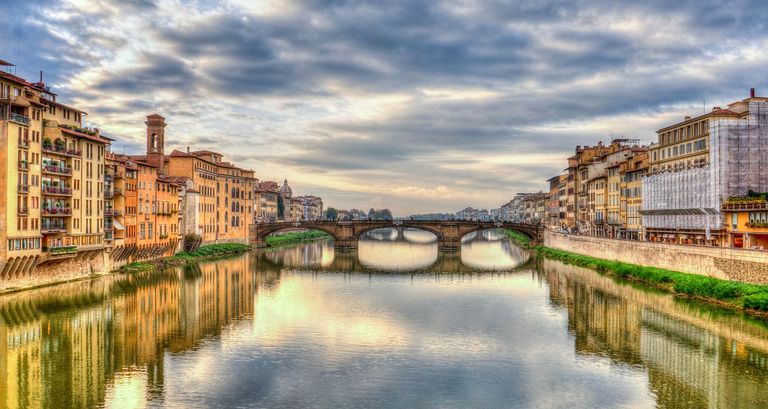
An interesting feature of the Ponte Vecchio is the so-called "Corridoio Vasariano" or Vasari Corridor. This is a covered passageway commissioned by Cosimo I de' Medici in the 16th century to allow the Medici dukes to pass unhindered between their palace, the Palazzo Pitti, across the Arno and the Palazzo Vecchio in the city center to commute. The Ponte Vecchio is not only an architectural gem, but also a vibrant place where visitors and locals alike can stroll, shop and enjoy the picturesque views of the Arno. The bridge has undergone many changes over the centuries, but it remains one of the most characteristic and popular attractions in Florence.
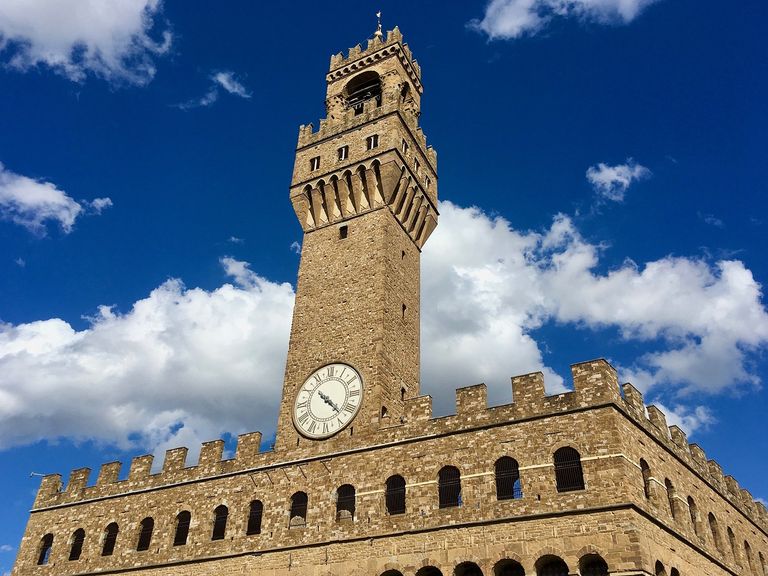
The Palazzo Vecchio, also known as the "Old Town Hall", is an imposing building in the center of Florence. It was built in the 13th century and initially served as the seat of the government of the Republic of Florence. The palace is an outstanding example of medieval and Renaissance architecture and a symbol of the political and cultural importance of Florence during the Renaissance period. The exterior of Palazzo Vecchio is characterized by its massive appearance and striking tower structure. The tall tower, called "Torre d'Arnolfo", is named after its architect, Arnolfo di Cambio, and offers impressive views over the city of Florence and the surrounding countryside.
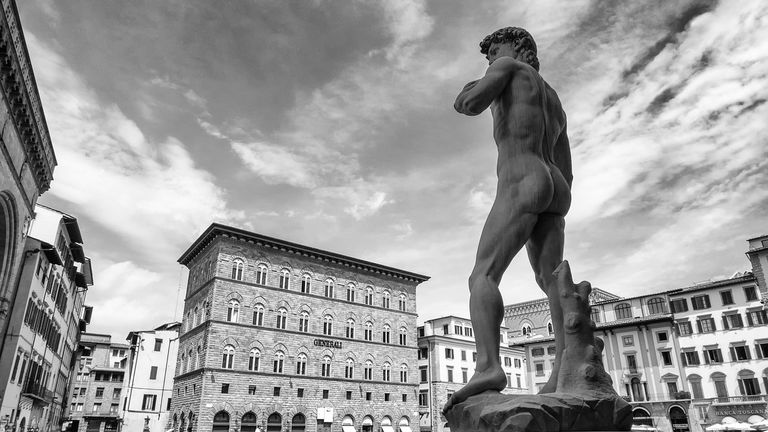
Inside the Palazzo Vecchio there is an abundance of ornate frescoes, sculptures and decorative elements. The Salone dei Cinquecento is one of the palace's most magnificent rooms and houses impressive frescoes by Giorgio Vasari depicting scenes from Florentine history. Another notable feature of the Palazzo Vecchio is the "Studiolo di Francesco I", a small study room built for Francesco I de' Medici in the 16th century. It is decorated with elaborate marquetry, paintings and other works of art and reflects the wealth and artistic splendor of the Medici rule.
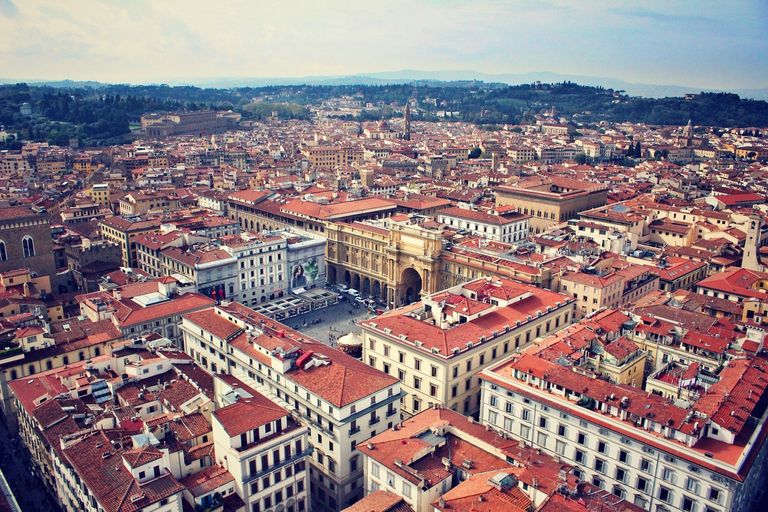
Today, Palazzo Vecchio serves as a museum and is open to visitors who wish to explore the magnificent architecture, ornate decorations and fascinating history of this historic building. The Palazzo Vecchio is not only an important cultural and historical site in Florence, but also a symbol of the city's rich past and artistic heyday during the Renaissance. One of my absolute highlights in Florence.
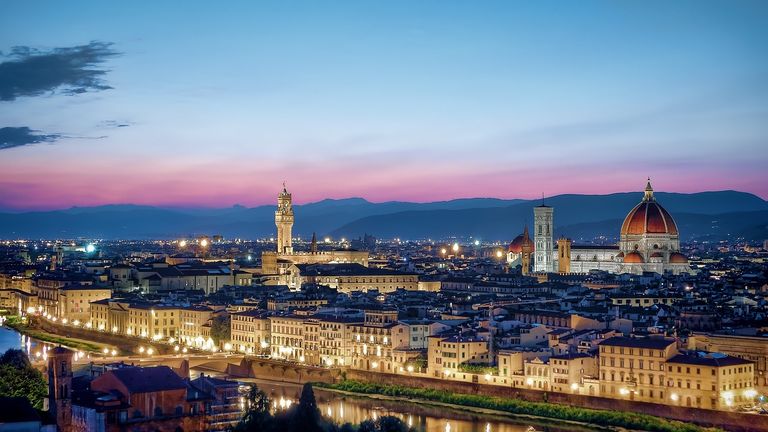
A truly enchanting city that is worth every visit. I hope I could whet your appetite for Florence and Tuscany.
Many greetings and see you soon
Al
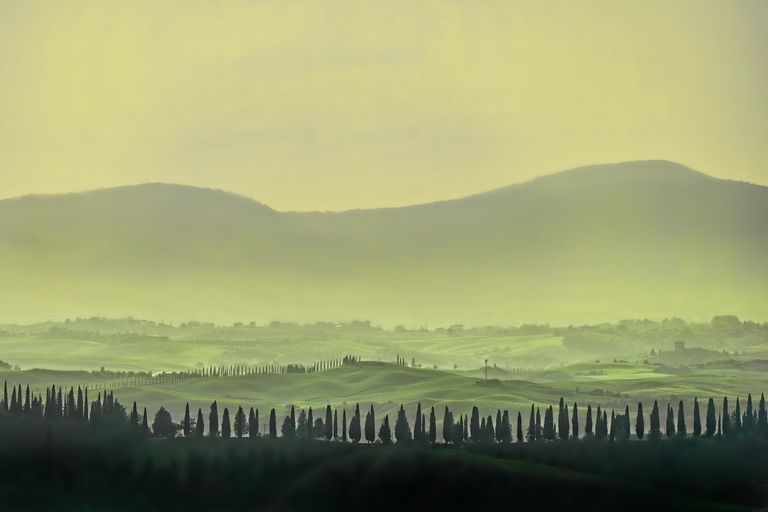
Imagesource:
https://pixabay.com/de/photos/florenz-abend-stadt-stra%C3%9Fe-2976607/
https://pixabay.com/de/photos/kathedrale-kuppel-geb%C3%A4ude-stadtbild-5881418/
https://pixabay.com/de/photos/fluss-arno-br%C3%BCcke-geb%C3%A4ude-1066307/
https://pixabay.com/de/photos/statue-von-david-skulptur-florenz-7491994/
https://pixabay.com/de/photos/florenz-palazzo-vecchio-2790263/
https://pixabay.com/de/photos/david-michelangelo-florenz-skulptur-1911095/
https://pixabay.com/de/photos/kuppel-italien-kirche-renaissance-1254710/
https://pixabay.com/de/photos/europa-italien-florenz-firenze-1803501/
https://pixabay.com/de/photos/toskana-landschaft-wald-panorama-3361927/
https://pixabay.com/de/photos/michelangelo-david-florenz-skulptur-1289376/
https://pixabay.com/de/photos/firenze-florenz-italien-europa-1263163/
https://pixabay.com/de/photos/alte-br%C3%BCcke-florenz-toskana-italien-2073980/
https://pixabay.com/de/photos/kuppel-dom-kathedrale-brunelleschi-541170/
https://pixabay.com/de/photos/florenz-italien-denkm%C3%A4ler-1060843/